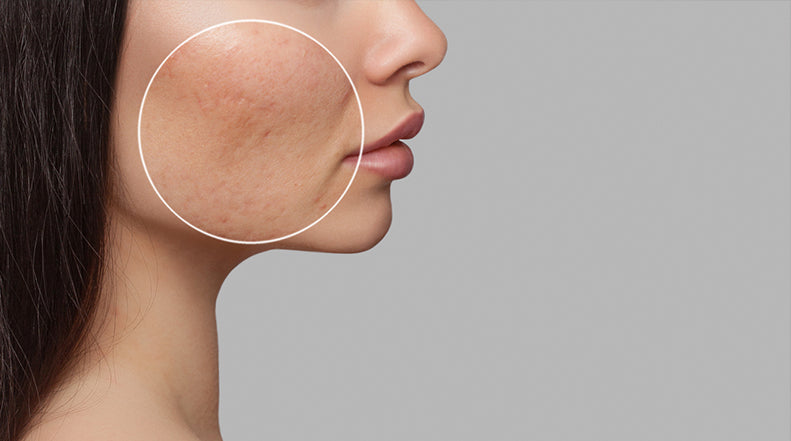How Makeup Affects the Scar Healing Process and How to Reduce Scar Noticeability

Scarring in and of itself is hard to deal with. Especially if the scar is somewhere noticeable. For instance, having a scar on the face could really impact a person's day to day lifestyle. A scar in a place where everyone can see it all of the time might make someone extremely self-conscious.
Before there is a scar, there is a wound. We know that wounds have a healing process and that from beginning to end every little step is important for the best possible outcome. Hindering your body’s natural ability to heal could lead to infection and further irritation of the wound, increasing chances of lingering imperfections. On the face, minimizing such imperfections is usually a high priority.
WHY YOU SHOULD NEVER APPLY MAKEUP OVER A HEALING WOUND
The most important time to keep your wound free of infection is when it is still open. Your open skin needs to be kept as clean as possible so that the healing process proceeds as efficiently as possible. Applying anything other than an antibacterial agent during this phase could the healing process and cause a number of problems.
While very tempting, applying makeup is not a good idea during this phase because it contains a variety of chemicals that when applied to an open wound may cause damage and slow healing. Makeup is also a source of bacteria because tubes and bottles can not keep it germ free. If you continue to cover your open or healing wound with makeup before it is healed, the scar that follows will likely be worse than originally possible.
HOW TO KNOW IF YOUR WOUND IS INFECTED
Wounds to the skin can develop a number of different infections. If you have already been applying makeup to an open wound and are worried you already have an infection, treating this infection is important. Some signs to look for:
- Are you experiencing increased pain in the wounded area? If yes, look for other signs of infection like excess redness spreading out from the wounded area.
- Is the wound starting to swell? This is important if you have already had the wound for a long period of time. The original swelling is normal, however weeks after receiving the wound, the swelling should be gone. The time it takes for the wound to stop swelling will be dependent upon the size of the original wound. However, it should be fairly obvious if the original swelling is gone and swelling due to infection is developing.
- Are there red streaks extending from the affected area? If there is a red, veiny look to your skin extending out around the area, this is another sign of infection.
- Is there drainage coming from the wounded area? If yes, you most likely have an infection. Drainage or pus coming from the affected area is one of the easiest ways to know if you have an infection.
- Lastly, if you are experiencing fevers and you have a new wound, the wound might be infected. Larger infections can cause high fevers.
TIPS TO CONCEAL SCARS
Luckily, with today’s treatments and technology there are several ways to reduce the noticeability of scars. It is in your best interest to leave your wounded area alone while it is healing and wait until it is a scar to begin trying to cover it up. It is best to accept that while your skin is healing, the area will be noticeable, especially if it is on your face. However, if you allow the healing process to take place without hindering it with makeup, you will be left with a much healthier scar that is able to be even further reduced.
Once your wound has closed and your skin has healed, a bit of makeup or cover up can actually help your scar. If you begin using makeup with SPF in it, your scar can benefit from this protection from the sun. UV rays from the sun can cause hyperpigmentation within the skin around the scar making your scar more noticeable.
Priming your skin before applying any makeup is a good idea especially if you are covering up a scar. Silicone scar gel can serve as a primer and help reduce scarring. Alternatively, there are several primers on the market that contain high levels of vitamin C which is incredibly effective for encouraging collagen levels within the skin. Producing new collagen will help replace the collagen that was broken down due to the skin injury. Using a primer will ensure that the scar is able to continue to heal properly even while its noticeability is reduced by makeup.
MAKEUP AND INGREDIENTS TO STAY AWAY FROM
Avoid any makeup products that have skin lightening agents in them such as bleach or hydroquinone, which can be extremely harmful to the skin. Ingredients like this can really slow down the healing process and leave a worse scar behind than you would have originally had. When covering your scar with anything, be mindful of the ingredients and the formula. The main goal should be to allow the scar to still heal even while it is being covered up.




Comments